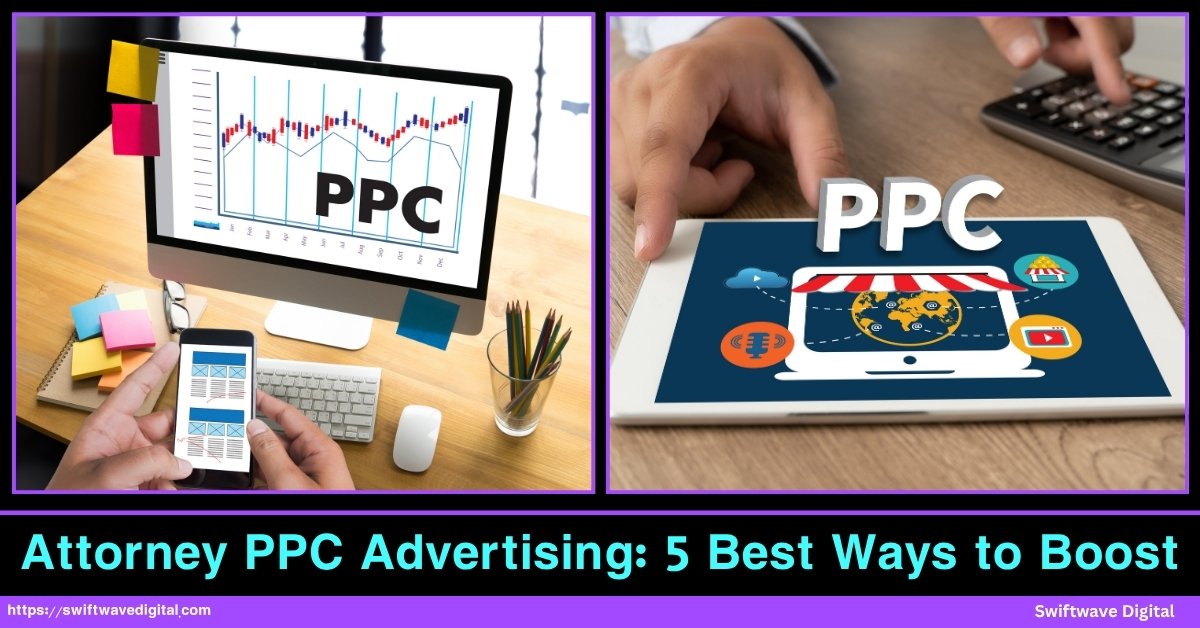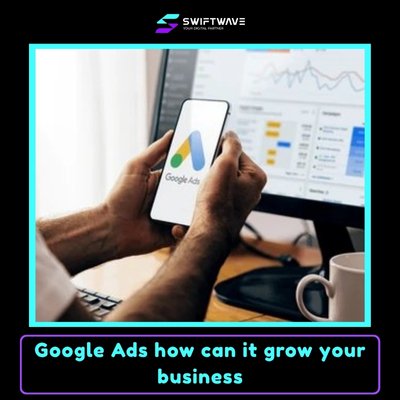Attorney PPC Advertising is one of the most competitive yet rewarding areas of digital marketing. For law firms, every click can cost anywhere from a few dollars to over $200 — meaning every impression, keyword, and ad must work hard to deliver real clients, not just traffic.
PPC (Pay-Per-Click) campaigns help attorneys appear exactly when potential clients are searching for legal help — “divorce lawyer near me,” “personal injury attorney,” or “criminal defense in [city].”
But because legal services are high-stakes, the competition for those keywords is fierce, and mistakes in setup or targeting can drain budgets fast.
To truly make PPC profitable, law firms need a strategy built on data not guesswork. This includes choosing high-intent keywords, writing precise ad copy, optimizing landing pages, and tracking every lead that comes in and a Skilled PPC Partner can turn that data into decisions that consistently bring in high-value cases
Done right, PPC becomes not just a lead generator but a consistent client acquisition channel that drives measurable ROI for your firm.
Attorney PPC Advertising: 5 Best Ways to Boost
In this guide, we will explain the 5 best ways to boost your Attorney PPC Advertising performance effectively and sustainably.
1. Target High-Intent, Long-Tail Keywords & Local Queries
The foundation of every successful attorney PPC campaign is keyword selection. The wrong keywords will burn through your budget without generating quality leads. The right ones, however, connect you directly with people who are ready to hire a lawyer.
Start by focusing on high-intent keywords phrases that indicate someone is actively seeking legal help. Examples include “car accident lawyer near me,” “divorce attorney free consultation,” or “criminal defense lawyer in [city].”
These searchers are not browsing for information; they’re ready to take action. In PPC, intent equals value.
Next, use long-tail keywords longer, more specific phrases. They have lower search volume but higher conversion rates because they attract users with specific needs. For example, instead of targeting “personal injury lawyer,” go for “personal injury lawyer for truck accidents in Chicago.” The clicks may cost less, and they’re much more likely to convert.
Don’t forget local targeting. Most clients look for nearby legal help, so always include city, neighborhood, or ZIP code keywords in your campaign. For example: “family law attorney Karachi” or “immigration lawyer Islamabad.” This helps your ad appear to users within your service area and reduces wasted spend on irrelevant traffic.
To refine results, use negative keywords terms you don’t want your ads to show for. Exclude words like “jobs,” “free advice,” “law school,” or “legal forms.” This prevents clicks from people who are not potential clients.
Finally, monitor search term reports weekly. Identify new keyword opportunities and continuously adjust your negative list. Keyword performance shifts with time, and staying updated ensures your campaigns remain relevant and cost-efficient.
In short, choose intent-driven, location-focused keywords that match the mindset of someone ready to hire. That single step alone can dramatically improve your conversion rate and cut down wasted ad spend.
2. Sharpen Ad Copy and Use Ad Extensions
Once the right keywords are set, your next task is to make users click. This depends entirely on your ad copy — what they read in the headline and description before deciding to visit your site.
Good PPC ad copy for attorneys is not about being creative or poetic; it’s about being clear, direct, and relevant. Match your ad text to the exact search intent of the user.
If your ad group targets “car accident lawyer,” then the ad headline should say “Car Accident Lawyer Near You” or “Injured in a Car Accident? Get Legal Help Now.” This alignment between keyword and ad text improves your Quality Score and lowers cost per click.
Focus on benefits and actions, not descriptions. Instead of writing “Experienced law firm providing services,” write “Free Case Evaluation – Speak to a Local Attorney Today.” The goal is to tell people what to do next and what they’ll get from it.
Always include a call to action (CTA) like “Call Now,” “Book Consultation,” or “Start Your Case Review.” These drive immediate engagement.
Also, make full use of ad extensions. They’re free and increase visibility. Add:
- Call extensions for instant phone calls (vital for mobile users).
- Location extensions so users know your firm’s address.
- Sitelink extensions linking to practice areas like “Family Law,” “Criminal Defense,” or “Immigration.”
- Structured snippets that highlight practice areas, services, or attorney qualifications.
Keep ads short, factual, and action-oriented. Test multiple variations of headlines and descriptions — small wording changes can shift results. Over time, pause underperforming ads and double down on the ones with higher click-through and conversion rates.
Effective ad copy speaks to one person with one problem. Make that person feel understood and show a direct path to a solution.
3. Optimize Landing Pages for Conversion
Even the best ad copy fails if the landing page doesn’t convert. Users who click your ad should instantly find what they expected — clear information, fast loading speed, and a simple way to contact you.
Avoid sending paid traffic to your homepage. Instead, create dedicated landing pages for each practice area or campaign. If your ad promotes “DUI Lawyer in Rawalpindi,” then the landing page headline should match exactly: “DUI Lawyer Serving Rawalpindi – Free Consultation.” This alignment increases trust and encourages users to stay.
Keep the layout simple. The most effective legal landing pages include:
- A strong, specific headline that matches the ad.
- Short, clear information about the service.
- A visible contact form or phone number above the fold.
- Client testimonials or short case outcomes (avoid long stories).
- Attorney credentials or years of experience for trust.
- A single call-to-action, not multiple options that distract users.
Speed is critical. A delay of even two seconds can make users leave. Compress images, use mobile-friendly designs, and test your page speed regularly.
The form itself should be short — name, contact, and brief case details are enough. The more fields you add, the fewer people will submit. If possible, use click-to-call or chat buttons for mobile visitors.
Every landing page should serve one purpose: to convert a visitor into a lead. Remove everything else that doesn’t help achieve that goal.
4. Use Smart Targeting: Geo, Time, Device, Negative Keywords
PPC success depends not just on who you reach but when and where you reach them. Smart targeting lets you control exactly who sees your ads — and when your budget works hardest.
Geo-targeting is non-negotiable for attorneys. Focus your ads only on areas where you can legally and practically serve clients. For example, if your office is in Lahore, there’s no reason to show ads to people in Karachi.
Set a radius around your city or ZIP code. This ensures your clicks come from nearby prospects who can actually become clients.
Time-based targeting (ad scheduling) helps you spend smarter. Review your data after a few weeks to see when most leads come in. If your calls and form submissions mostly happen between 9 AM and 7 PM, run ads during those hours only and the Right Campaign Management helps your ads appear exactly when clients are most likely to cal
You can even bid higher during peak hours and lower bids overnight or on weekends if conversions drop.
Device targeting is another factor. Many users search for legal help on their phones, but complex forms may perform better on desktops. Compare device performance and adjust bids accordingly. You can even create separate mobile-optimized landing pages for smoother experiences.
And again, negative keywords are your filter. They protect your campaign from irrelevant traffic. Review search terms regularly and add negatives like “free,” “template,” “definition,” “law school,” or “internship.” Each of those clicks costs money and brings zero clients.
The goal of smart targeting is precision. The more specific your targeting settings, the higher your lead quality, and the less money wasted.
5. Track Metrics, Test, Iterate Continuously
PPC is not a “set and forget” system. Without ongoing tracking and testing, your campaign performance will plateau or decline. The most successful attorney campaigns are data-driven and constantly evolving.
First, set up conversion tracking correctly. You must know which clicks turn into calls, form submissions, or booked consultations. Use Google Ads conversion tracking or integrate Google Analytics to monitor performance. Track phone calls through dynamic numbers if possible.
Watch the following metrics closely:
- CTR (Click-Through Rate): Indicates how effective your ads are at attracting attention.
- CPC (Cost Per Click): Measures how efficiently you’re spending per visitor.
- Conversion Rate: Shows how many visitors become leads.
- CPL (Cost Per Lead): The actual cost to get one inquiry.
- Quality Score: Google’s rating of your ad relevance; improving it can lower costs.
Review data weekly. Identify ads or keywords with high costs but low conversions pause them. Shift more budget to campaigns producing leads at the lowest CPL.
A/B testing is essential. Test one variable at a time such as headline wording, CTA placement, or form design. Small consistent improvements across dozens of tests can double your overall conversion rate over time.
Keep refining. Trends change, competitor bidding shifts, and new keywords appear. PPC rewards those who monitor closely and react quickly.
Data doesn’t lie — if you track accurately and adjust consistently, performance will improve.
Bringing It Together: Example Walk-Through
Let’s tie everything together in a simple, actionable process that any law firm can follow:
Start by doing a complete campaign audit. Look at your existing keywords, ad groups, landing pages, and performance metrics. Identify which areas waste the most spend — often it’s broad keywords or irrelevant locations.
Next, rebuild your campaign structure. Create ad groups around specific practice areas like “Family Law,” “Personal Injury,” or “Criminal Defense.” Assign relevant long-tail and location-based keywords to each. Write ad copy that speaks directly to the search intent for that group.
Develop new landing pages matching each ad group. Keep them fast, focused, and conversion-oriented. Add testimonials, trust elements, and clear CTAs.
Set up geo-targeting to reach clients in your exact service region. Schedule ads during business hours, and use call extensions so prospects can reach you immediately.
Enable tracking for all major conversion actions: phone calls, contact forms, and live chat. Review your data every few days. Cut out what doesn’t work and test what might.
Within a month, you’ll have data strong enough to identify patterns — which keywords bring leads, what copy converts best, and which hours perform strongest. From there, keep refining every week. That’s how PPC delivers real results instead of wasted spend.
Realistic Expectations & Common Pitfalls
Attorney PPC advertising delivers measurable results, but only if approached strategically. Expect a few weeks of learning and adjustment before performance stabilizes. The first month is about collecting data; the second is about optimization.
Costs vary by practice area and city. Personal injury and medical malpractice keywords can exceed $150 per click, while family law or immigration terms may be far cheaper. Don’t panic over high CPCs focus on cost per lead and cost per client instead.
Avoid common pitfalls:
- No targeting discipline: Running nationwide ads for a local practice wastes most of the budget.
- Weak landing pages: Sending paid traffic to your homepage rarely converts well.
- Ignoring negative keywords: These can save thousands in irrelevant clicks.
- Not tracking conversions: You can’t improve what you don’t measure.
- Slow response times: Leads from PPC lose value if your firm doesn’t follow up immediately.
Treat PPC like a living system monitor, refine, and respond to changes. The legal market evolves, user behavior shifts, and algorithms adjust. Firms that adapt continue to get leads; those that don’t, fade out.
Success in attorney PPC advertising isn’t about spending the most; it’s about spending smart targeting intent, writing focused ads, creating clean landing pages, and measuring every result.
With consistent optimization, your campaigns can transform from costly experiments into predictable client pipelines and when managed by the Right Team, that pipeline keeps delivering results month after month — not just once in a while
Conclusion
Attorney PPC Advertising can be one of the most effective ways to generate consistent, high-quality leads but only if it’s done with precision and ongoing attention. The legal industry is one of the most competitive spaces in online marketing, and every click carries a cost.
That’s why success doesn’t come from spending more; it comes from managing smarter. When you focus on high-intent keywords, craft clear and relevant ad copy, design fast and targeted landing pages, apply smart targeting filters, and continuously test and track performance, you turn your PPC campaigns into a predictable client acquisition engine.
The key is consistency. PPC isn’t a “launch once” setup; it’s a process of refinement and data-based decision-making. By understanding what drives clicks, conversions, and actual client sign-ups, you can lower your cost per lead while increasing overall ROI.
For attorneys looking to stay visible, competitive, and profitable online, mastering PPC isn’t optional it’s essential.




